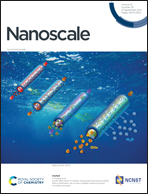First-principles calculations for understanding microstructures and mechanical properties of co-sputtered Al alloys†
Abstract
Recent experimental studies show that co-sputtering solutes with Al, together, can refine columnar grain size around few tens of nanometers and promote the formation and enhance the stability of planar defects such as stacking faults (SFs) and grain boundaries (GBs) in Al alloys. These crystal defects and fine columnar grains result in high strength, enhanced strain hardening and thermal stability of Al alloys. Using first-principles density-functional theory (DFT) calculations, we studied the role of eleven solutes in tailoring kinetics and energetics of adatoms and clusters on Al {111} surface, stable and unstable stacking fault energies, and kinetic energy barriers for the migration of defects. The calculations show that most solutes can effectively refine columnar grain size by decreasing the diffusivity of adatoms and surface clusters. These solutes do not necessarily decrease the stacking fault energy of Al alloys, but reduce the formation energy of faulted surface clusters and increase the energy barriers for the recovery of faulted surface clusters. Correspondingly, the formation of SFs is kinetically promoted during sputtering. Furthermore, solutes are segregated into the core of Shockley partial dislocations and play a pinning effect on SFs, SF arrays and twin boundaries, enhancing the thermal stability of these crystal defects. These findings provide insights into the design of high-strength Al alloys for high-temperature applications.



 Please wait while we load your content...
Please wait while we load your content...